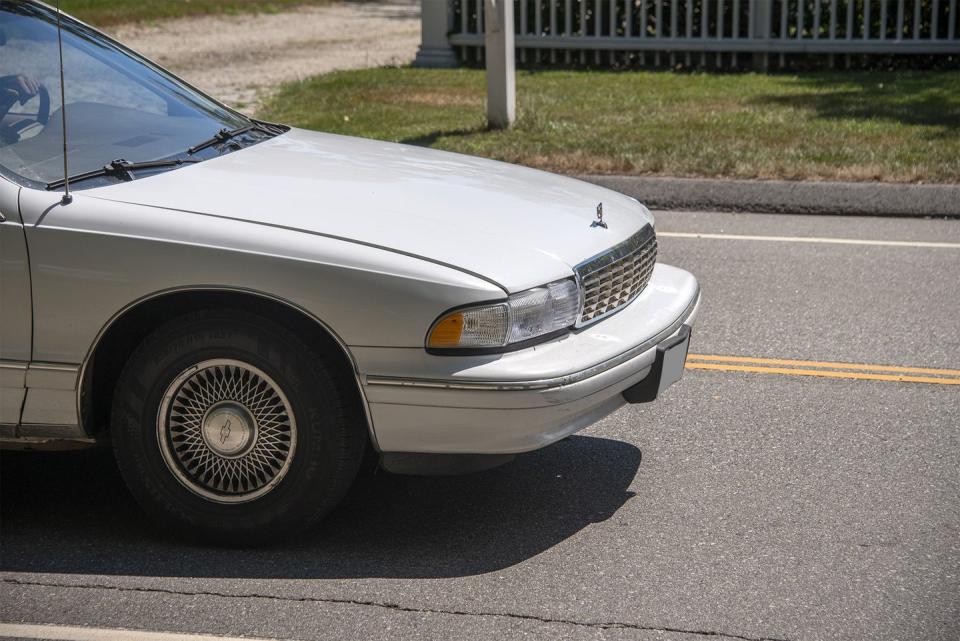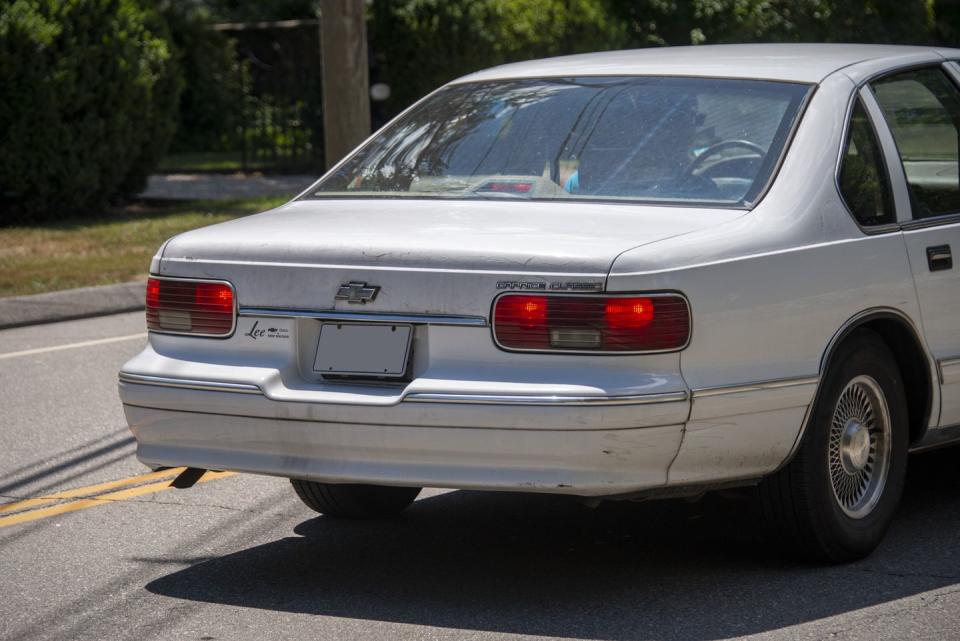Street-Spotted: Chevrolet Caprice Classic

The big '90s sedan duo of the Chevrolet Caprice and Ford Crown Victoria debuted almost at the same time but ended up leading vastly different lives, and only one of these is easy to spot on the street today. Which makes this Caprice we recently spotted a bit of a rarity these days.
Both models arrived at something of an odd time for big American sedans: the boxy styling became unfashionable virtually overnight. The era of big sedans being the default family car was rapidly coming to a close, but new technology underneath was not really in the cards. Midsize Japanese sedans were rapidly taking over, and so were domestic SUVs. In many ways the Crown Victoria and Caprice both seemed like anachronisms even as they were arriving on the scene, despite the non-boxy, aerodynamic styling featured by both.
Neither Ford nor Chevrolet made a big push at the time to introduce new underpinnings. Both sedans largely reused their immediate predecessors' innards—which in the case of the Caprice dated all the way back to 1977. But the large sedan hid it well, featuring a design inspired by the 1988 Cadillac Voyage concept that sketched out the entire GM B-body lineup across several brands. The Caprice and the Buick Roadmaster sedans, therefore, were not far stylistically from the Cadillac Fleetwood—a fact barely obscured in the Roadmaster's design—with the Caprice retaining much of the aerodynamic looks.

While the Buick and Cadillac models were aimed squarely at private owners, the Caprice filled a slightly more fluid niche, intended to arrive in fleets and driveways in about an equal mix.
But while the Ford Crown Victoria went on to have a long tenure—far longer than many would have predicted back in 1991—the Caprice seemed to vanish long before its time was officially up. Even in taxi and police fleets the Caprice seemed to have a relatively short life, to the point that by the early 2000s it was already difficult to spot it in service in either type of fleet.
Of course, Chevrolet knew what kind of buyer it was targeting.
"The new Caprice LTZ was rigorously designed to meet or surpass the very definite standards of its traditional buyers," ad copy of the time boasted. "Yet one look will tell you how radically it redefined that tradition of full-size luxury and value."
There was perhaps more truth in that statement than it may appear at first, with Chevrolet leaning heavily on the concepts "tradition" and "traditional buyers." The styling certainly tried to radically redefine the look of the full-size sedan, after the boxy styling of the '80s had run its course, but it was not the design hit that Chevy had wanted, despite winning a few awards. The bulbous styling was not to everyone's taste, even though the similarly styled Buick Roadmaster wagon seemed to thrive on it. (Of course, it helped that the faux wood siding helped break up the slabby profile of the wagon, while also offering a cavernous interior along with it).

While the Caprice sedan scored adequate sales early on, the Caprice wagon seemed to be a rarity on dealer lots, along with one other variant. The rarest version of this bodystyle ended up being the Olds Custom Cruiser wagon, around 11,000 of which were produced over just three model years.
1996 was the last model year for the Caprice, yet it's difficult to picture private buyers lining up to buy a Caprice sedan in the same year Independence Day came out. Sales did drop quite a bit by the last two models years, but the big Chevy still sold in respectable numbers almost until the end.
And yet, a quarter century later, seeing a Caprice sedan in traffic is a strangely transfixing experience, just because it's one of those cars that few have made an effort to preserve. It's still easy to find a Fleetwood or Roadmaster sedan from this time period... but not a Caprice sedan or station wagon. It is one of those once common cars from the recent past that seemed to be everywhere two decades ago, but now seems like a special occasion to spot on the street.
Did you or your neighbors have one of these in the 1990s? Let us know in the comments.

